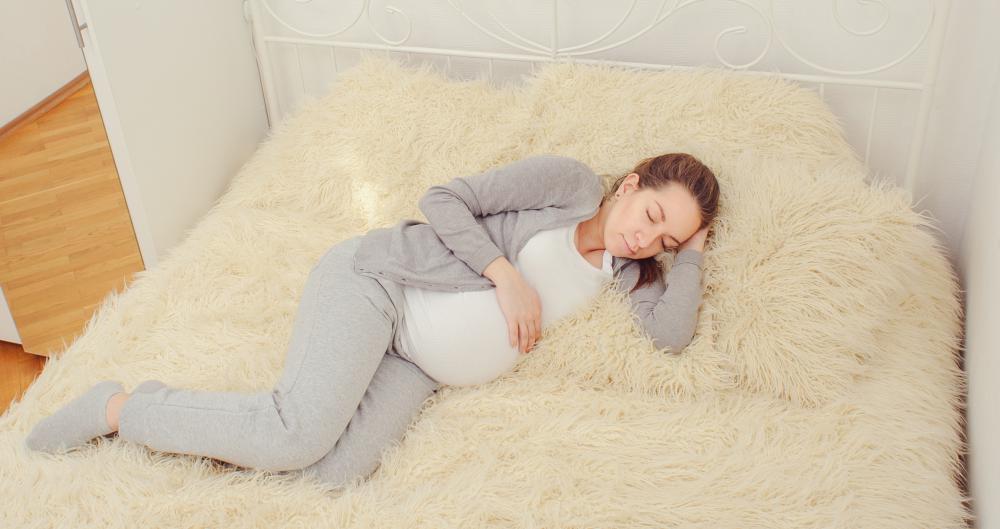At WiseGEEK, we're committed to delivering accurate, trustworthy information. Our expert-authored content is rigorously fact-checked and sourced from credible authorities. Discover how we uphold the highest standards in providing you with reliable knowledge.
What are the Risks of Deep Vein Thrombosis During Pregnancy?
When a blood clot forms in a vein that's located deep within the body, particularly those in the legs, it may result in a condition known as deep vein thrombosis (DVT). Anyone can develop this condition, but pregnant women are at increased risk simply due to the pregnancy itself. Other risk factors of deep vein thrombosis during pregnancy include previous occurrences of DVT or clotting issues and immobility.
When a woman is pregnant, her rate of blood flow slows down dramatically. This is partially due to hormone changes associated with pregnancy, which can cause the blood to thicken and clot more quickly than normal. As the pregnancy progresses, the growing fetus also puts pressure on the large veins in the pelvis and upper legs, reducing blood flow even more. The risk of deep vein thrombosis during pregnancy does not end until approximately six weeks after giving birth, when a woman's hormone levels and blood flow return to normal.

Anyone who has previously developed deep vein thrombosis during pregnancy is more at risk for another occurrence of DVT. Even if the patient does not have a family or personal history of clotting disorders, she may develop blood clots when pregnant. If a woman's medical history includes clotting disorders, she is more susceptible to DVT, even if she did not develop the condition in previous pregnancies.

Immobility may also lead to deep vein thrombosis during pregnancy. Women with difficult pregnancies are often told by their doctors to restrict their physical activity to some degree. The most limiting restriction, often known as "bed rest," confines the patient to bed for a period of time that varies according to the woman's specific complications. Bed rest greatly increases the chance of DVT, as the lack of movement may cause blood to pool in the legs. A woman with a low-risk, healthy pregnancy may also develop DVT from shorter periods of immobility, such as those experienced while traveling.

Symptoms of deep vein thrombosis include pain and swelling at the site of the clot and below. Deep vein thrombosis during pregnancy may cause the vein to swell so much that a doctor can feel it through the skin. The leg may also become red and warm to the touch in the area surrounding the clot.
Compression stockings, tight-fitting stockings that reduce the risk of blood clot formation, can be helpful in preventing deep vein thrombosis in patients on bed rest. Women who have experienced a prior deep vein thrombosis during pregnancy may also wear compression stockings as a preventative measure. Pregnant women should take frequent breaks to stand, stretch and walk around when traveling or during any other period of extended immobility. This light activity keeps the blood flowing and reduces the risk of DVT.

Warfarin, a blood thinner, is the preferred method of treating deep vein thrombosis. However, this medication may not be given to pregnant women, as it may cause excessive bleeding for the woman and fetus or affect the development of the fetus. Instead, heparin, a drug that prevents the blood clot from growing larger and allows the body to dissolve it, is the typical method of treatment for pregnant women with DVT.
AS FEATURED ON:
AS FEATURED ON:














Discuss this Article
Post your comments